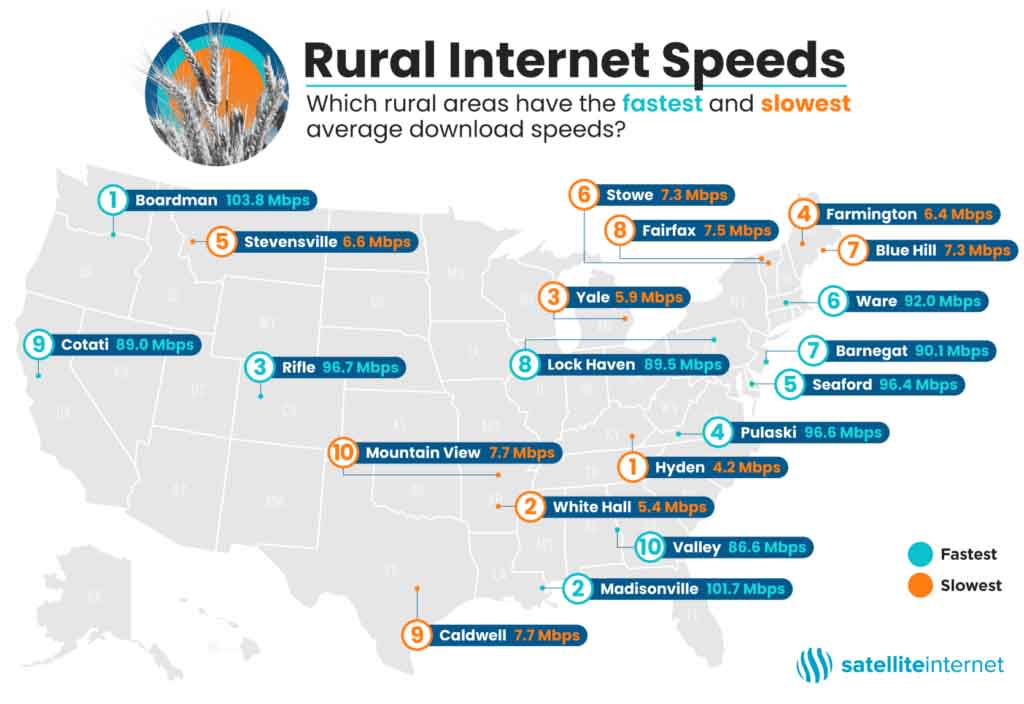We recommend Viasat as the best rural satellite provider for several vital reasons. In early 2024, Viasat overhauled its satellite internet packages to be more affordable and reliable by eliminating mandatory contracts and unlocking unlimited data for all users. This package is called Viasat Unleashed and replaced most of Viasat’s previous offerings.
Viasat offers download speeds of 30–150 Mbps, which is plenty of speed to surf the web, pay bills, shop online, and even stream TV. Your speeds and pricing will depend on your location and the results of a soft credit check.
With higher latency, online gaming, 4K TV streaming, and frequent teleconferencing will be tough. Satellite internet is also affected by weather.
While a traditional wired plan or fixed-wireless/5G is likely to offer much faster speeds for similar pricing, Viasat is one of the only solutions accessible nearly everywhere for an affordable price.
Like most satellite internet providers, Viasat allocates a fixed amount of bandwidth to its customers every month. While the Unleashed package doesn’t come with a complex data cap like other providers, the provider enforces a typical usage limit during network congestion. The company states that typical usage is 850GB within 30 days—going over that usage may result in the provider slowing you down.
Viasat also eliminated a restrictive two-year contract for its service, meaning you had to pay a pricey early termination fee if you wanted to cancel. Now, the service bills you month-to-month, making it less risky to try out.
We recommend Viasat over main competitors Hughesnet and Starlink in multiple categories, namely value. Viasat is a good, middle-of-the-road option for customers looking for reliable satellite internet, who don’t need blazing-fast speeds, and who don’t want to pay for costly plans and setups.
Hughesnet is the provider with the lowest-priced packages. While its Select plan is nearly half as much as Viasat Unleased's monthly rate, Hughesnet still requires a two-year commitment, locking you into the service unless you pay an early termination fee based on the remaining time on your contract. While Hughesnet’s top speed of 100 Mbps is close to most of Viasat’s packages, it also has some surprisingly low-priority data caps. Once you run through your data of 100 GB or 200 GB per month, your speeds will fall to 1 to 3 Mbps. It is still usable for the most basic of functions but not practical. You can purchase more data when you run out, but you will quickly inflate your initially cheap bill.
Starlink is another satellite internet option that’s been exploding in popularity. We’ll talk more about them below.





